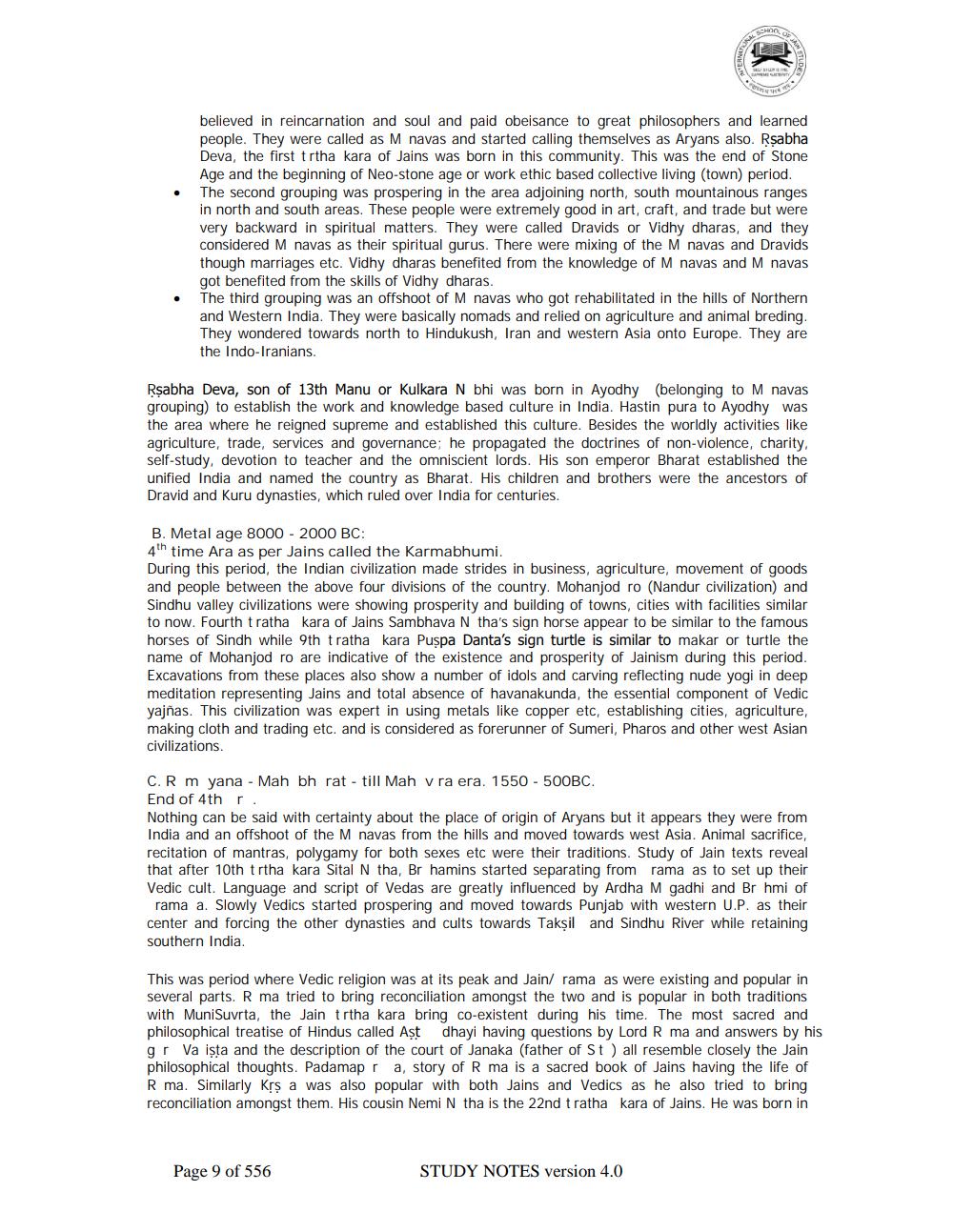________________
believed in reincarnation and soul and paid obeisance to great philosophers and learned people. They were called as M navas and started calling themselves as Aryans also. Rsabha Deva, the first trtha kara of Jains was born in this community. This was the end of Stone Age and the beginning of Neo-stone age or work ethic based collective living (town) period. The second grouping was prospering in the area adjoining north, south mountainous ranges in north and south areas. These people were extremely good in art, craft, and trade but were very backward in spiritual matters. They were called Dravids or Vidhy dharas, and they considered M navas as their spiritual gurus. There were mixing of the M navas and Dravids though marriages etc. Vidhy dharas benefited from the knowledge of M navas and M navas got benefited from the skills of Vidhy dharas. The third grouping was an offshoot of M navas who got rehabilitated in the hills of Northern and Western India. They were basically nomads and relied on agriculture and animal breding. They wondered towards north to Hindukush, Iran and western Asia onto Europe. They are the Indo-Iranians.
Rşabha Deva, son of 13th Manu or Kulkara N bhi was born in Ayodhy (belonging to M navas grouping) to establish the work and knowledge based culture in India. Hastin pura to Ayodhy was the area where he reigned supreme and established this culture. Besides the worldly activities like agriculture, trade, services and governance; he propagated the doctrines of non-violence, charity, self-study, devotion to teacher and the omniscient lords. His son emperor Bharat established the unified India and named the country as Bharat. His children and brothers were the ancestors of Dravid and Kuru dynasties, which ruled over India for centuries.
B. Metal age 8000 - 2000 BC: 4th time Ara as per Jains called the Karmabhumi. During this period, the Indian civilization made strides in business, agriculture, movement of goods and people between the above four divisions of the country. Mohanjod ro (Nandur civilization) and Sindhu valley civilizations were showing prosperity and building of towns, cities with facilities similar to now. Fourth tratha kara of Jains Sambhava N tha's sign horse appear to be similar to the famous horses of Sindh while 9th tratha kara Puspa Danta's sign turtle is similar to makar or turtle the name of Mohanjod ro are indicative of the existence and prosperity of Jainism during this period. Excavations from these places also show a number of idols and carving reflecting nude yogi in deep meditation representing Jains and total absence of havanakunda, the essential component of Vedic yajñas. This civilization was expert in using metals like copper etc, establishing cities, agriculture, making cloth and trading etc. and is considered as forerunner of Sumeri, Pharos and other west Asian civilizations
C.Rm yana - Mah bh rat - till Mah v ra era. 1550 - 500BC End of 4th r. Nothing can be said with certainty about the place of origin of Aryans but it appears they were from India and an offshoot of the M navas from the hills and moved towards west Asia. Animal sacrifice, recitation of mantras, polygamy for both sexes etc were their traditions. Study of Jain texts reveal that after 10th t rtha kara Sital N tha, Br hamins started separating from rama as to set up their Vedic cult. Language and script of Vedas are greatly influenced by Ardha M gadhi and Br hmi of
rama a. Slowly Vedics started prospering and moved towards Punjab with western U.P. as their center and forcing the other dynasties and cults towards Takşil and Sindhu River while retaining southern India
This was period where Vedic religion was at its peak and Jain/ rama as were existing and popular in several parts. R ma tried to bring reconciliation amongst the two and is popular in both traditions with Munisuvrta, the Jain trtha kara bring co-existent during his time. The most sacred and philosophical treatise of Hindus called Ast dhayi having questions by Lord R ma and answers by his gr Va ista and the description of the court of Janaka (father of St ) all resemble closely the Jain philosophical thoughts. Padamapr a, story of R ma is a sacred book of Jains having the life of Rma. Similarly krs a was also popular with both Jains and Vedics as he also tried to bring reconciliation amongst them. His cousin Nemi N tha is the 22nd tratha kara of Jains. He was born in
Page 9 of 556
STUDY NOTES version 4.0




